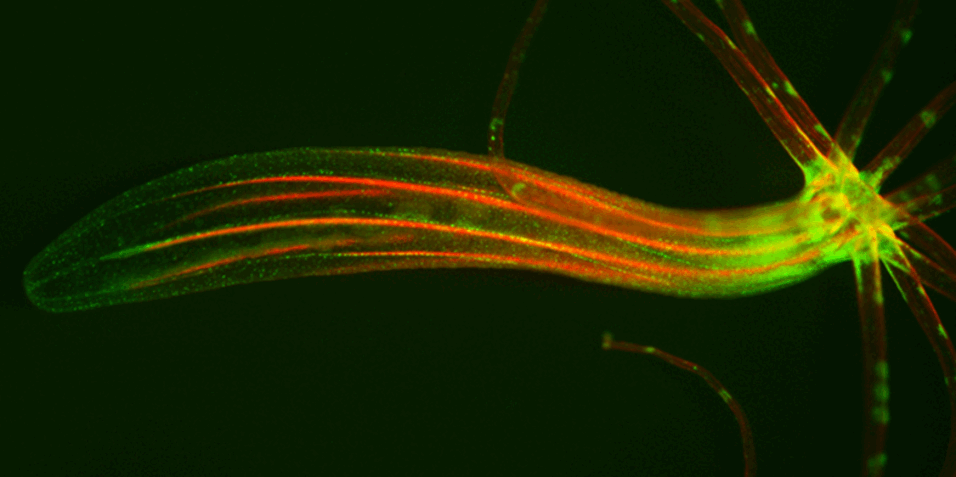The sea anemone Nematostella vectensis is a model system used by a rapidly growing research community for comparative genomics, developmental biology and ecology. Here, we describe a microinjection procedure for creating stable transgenic lines in Nematostella based on meganuclease (I-SceI)-assisted integration of a transgenic cassette into the genome. The procedure describes the preparation of the reagents, microinjection of the transgenesis vector and the husbandry of transgenic animals. The microinjection setup differs from those of previously published protocols by the use of a holding capillary mounted on an inverted fluorescence microscope. In one session of injections, a single researcher can microinject up to 1,300 zygotes with a reporter construct digested with the meganuclease I-SceI. Under optimal conditions, fully transgenic heterozygous F1 animals can be obtained within 4-5 months of the injections, with a germ-line transmission efficiency of ∼3%. The method is versatile and, after a short training phase, can be carried out by any researcher with basic training in molecular biology. Flexibility of construct design enables this method to be used for numerous applications, including the functional dissection of cis-regulatory elements, subcellular localization of proteins, detection of protein-binding partners, ectopic expression of genes of interest, lineage tracing and cell-type-specific reporter gene expression.

